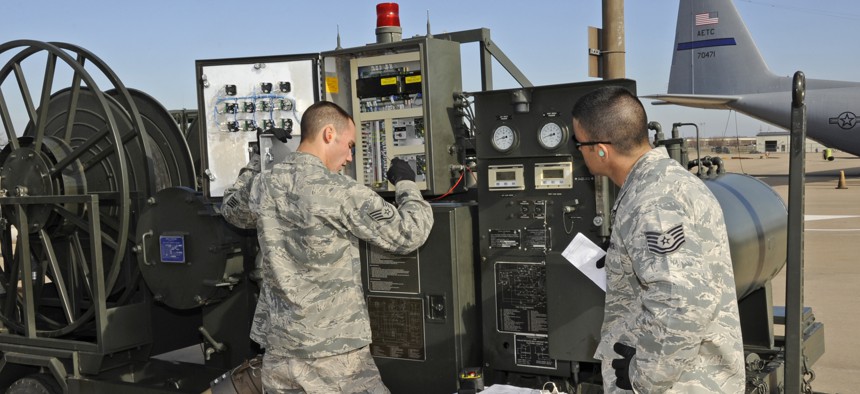Ultra-compact technology makes bio-implanted antenna possible
The Air Force Research Laboratory has made a breakthrough in magnetoelectric technology, shrinking antenna by over 90% and making bio-antenna a future possibility.
When it comes to antennae, the bigger the better has was the governing rule. However, new technology has now made it possible to have antennae less than a millimeter long. Thanks to the Air Force Research Laboratory (AFRL) in collaboration with Northeastern University, ultra-compact antenna technology could mean wearable, bio-implantable, and bio-injectable antennas for tomorrow’s airmen.
“We identified ultra-compact antennas as the critical last step in true device miniaturization. Researchers had successfully shrunk most electronic components, but the true miniaturization of antennas was still a missing piece,” said Dr. Brandon Howe, a materials scientist with the AFRL.
Traditionally, size has affected an antenna’s ability to function as the length of the antenna determines the frequency it resonates at when hit with electromagnetic transmissions. The AFRL reports that prior to this recent breakthrough, miniature antennae were about ten percent the measure of the wavelength being transmitted. In contrast, the ultra-compact antennae can measure less than one percent of the wavelength.
The technology behind the ultra-compact antennae involves a process of converting microwaves to strain waves, which then can be converted to radiation, according to Dr. Michael McConney, a materials scientist at the AFRL.
The antennae are built using multiferroic composite, or a unique combination of ferromagnetic and ferroelectric material, according to publications by the National Institute of Science. The ferroelectric material generates piezostrain, which then transfers to and modifies the ferromagnetic materials, in a process known as strain-mediated magnetoelectric coupling, according to the publications. The resulting wavelengths travel slower than the speed of light, which means desired frequency can be maintained while the wavelength, and therefore the antenna length, can be shrunk.
Overall, the AFRL and Northeastern team was able to shrink the size of an antenna by over 90%, reports the AFRL press release.
“Usually the antenna is the last thing people think about in developing an integrated system, but without it, you can’t hear things out there; you can’t intercept those signals,” explained Susie Morales of the AFRL team. “We want to detect those signals and act quickly upon them. There are challenging signals out there we want to know about for battle space awareness and information dominance.”
As of yet, no definite plans exist for integrating these ultra-compact antennae into the next generation of Air Force technology, but the AFRL reports that this breakthrough could be used for rugged smart phones and compact wireless communication systems, as well as wearable, bio-implantable, and bio-injectable antennas.
NEXT STORY: Navy modernizes SIPRNet and NIPRNet for barges





